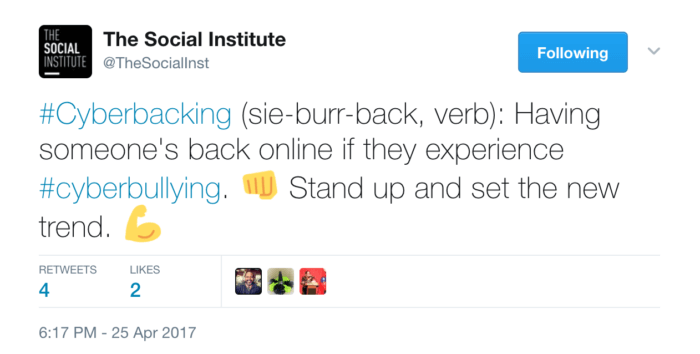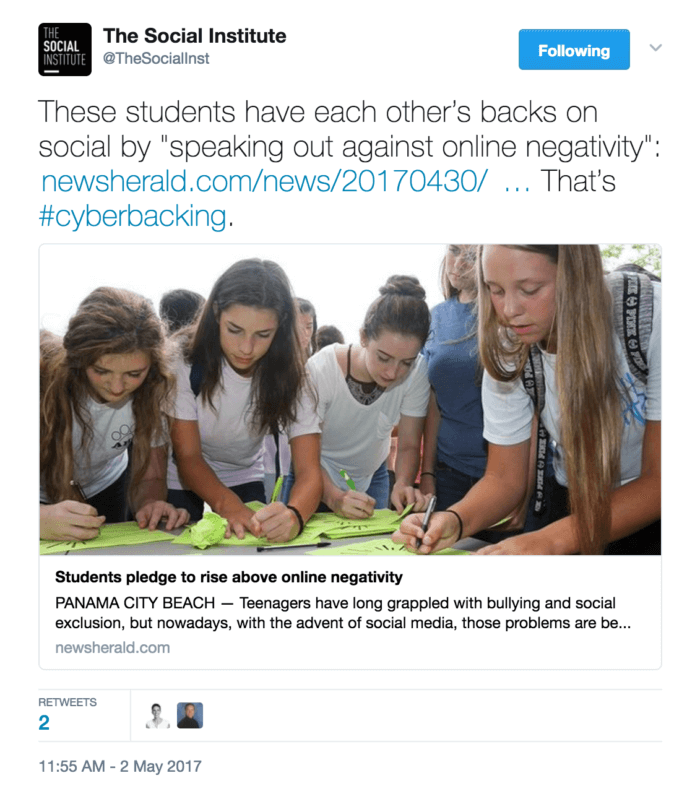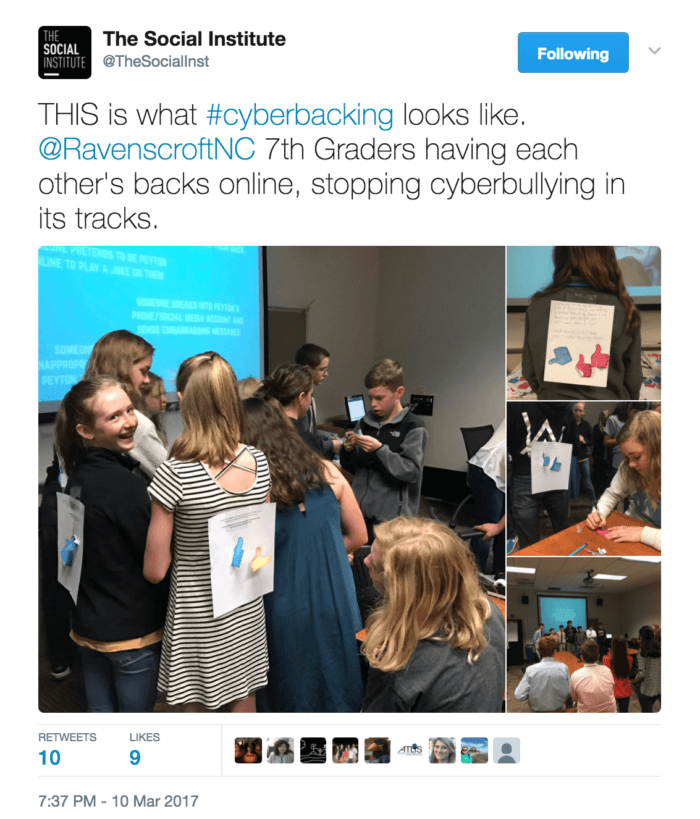Fight cyberbullying with cyberbacking: Back each other up
At least three people are usually involved in any bullying situation:
- The person doing the bullying
- The person being bullied
- The person who sees it happen
We talk a lot about those first two people: the bully and the bullied. Considering the limited number of bullies and their victims, however, this is a pretty small group. Not everyone is bullied, and fewer still bully others.
But everyone has witnessed it, online or IRL. After all, without an audience, the bully has little reason to act out. Today’s digital reach gives bullies an instant crowd of bystanders, potentially around the world.
The witnesses are the key to combatting cyberbullying.
We believe that this larger group of people, the witnesses, are the 🔑 to combatting the growing problem of bullying. If they come together to back up the people they see being bullied, cyberbackers can both help heal those who have been hurt by bullies and discourage future bullying.
We call it cyberbacking.
What is cyberbacking, exactly?
Cyberbacking means supporting someone you witness being bullied in a digital space.

This could look like a lot of things. Maybe it’s receiving a mean message, rumor, or threat. Maybe an unflattering photo of them is shared online or in a group text. Intentionally excluding someone — like, cropping them out of a group photo — is a form of bullying, too. So is pretending to be someone else in order to hurt another person.
Anyone who sees bullying happen can combat the negativity with positive cyberbacking.
- If you know the person doing the bullying, cyberbacking means calling them out on it.
- If you know the person being bullied, cyberbacking means encouraging, reassuring and supporting them.
- If you don’t know either person, cyberbacking means (again) encouraging, reassuring and supporting the person who was bullied.
So, what does cyberbacking look like?

Imagine this: You’re in a group chat with five other friends, and one of them shares what was clearly meant to be a private photo of his girlfriend. She lives next door to you, and you see her at the bus stop every day. What do you do? Here are some cyberbacking ideas:
- Say something in the group chat to the guy who shared the photos. “Not cool man, delete those” is sufficient.
- Say something to your neighbor at the bus stop. “Hey, I thought you should know that a picture of you is being texted around.”
Let’s do another one. Imagine this: You see that someone using a fake Instagram account (a finsta) has left a negative comment about a classmate’s hair under one of her posts. You also have an account on Instagram. What do you do?
- Leave your own comment and tag the finsta: “Quit it, @[finsta handle].”
- Leave a positive comment about your classmate’s hair.
- Tell your classmate in person that you saw the finsta comment on her post and that you disagree with it.

Real quick, why do some people bully other people?
For the same reasons they have always bullied other people. The National Crime Prevention Council surveyed over 800 teens about it, and the most popular reason is because they think it’s funny. More than half reported bullying because they just don’t like the other person, and most don’t think it’s a big deal. And even though being bullied makes people feel like losers, only 45% of the teens surveyed said they bully because they “view the victim as a loser.”
We also know that some people bully others because they feel bad about themselves and feel better, for a time, when they make someone else feel worse. Others bully when they are scared or hurt about something completely different — and they act react by bullying. It’s a way to regain control over something.
Cyberbacking is a foolproof way to win at social.
Sometimes it’s helpful for students of all ages to be reminded of these reasons. It may put things into perspective and give them courage to cyberback like a champion. It’s a foolproof way to win at social.
